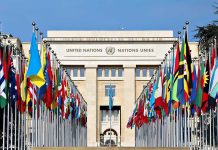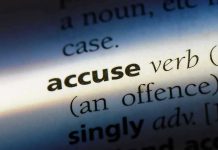
A California jury’s multimillion-dollar verdict against the Los Angeles County Sheriff’s Department exposes a glaring threat to law enforcement accountability—and raises pressing questions about the erosion of order and constitutional protections when police actions at protests are put on trial.
Story Snapshot
- A Los Angeles jury awarded over $2 million to Cellin Gluck who was shot in the face by a sheriff’s deputy during a 2020 demonstration.
- The deputy who fired the less-lethal projectile was never identified, highlighting failures in law enforcement accountability mechanisms.
- The verdict follows a trend of costly settlements against police, with taxpayers footing the bill amid ongoing debates about use of force and protest policing.
- LA County is considering an appeal, as critics warn these lawsuits may discourage effective law enforcement and embolden disruptive demonstrations.
Jury Verdict Puts Law Enforcement Tactics Under Scrutiny
On August 27, 2025, a Los Angeles jury awarded more than $2 million in damages to filmmaker Cellin Gluck and his daughter after Gluck was struck in the face by a so-called “less-lethal” police round during a protest in LA’s Fairfax District. The protest, sparked by the killing of George Floyd, saw widespread unrest and aggressive crowd-control measures. Gluck, unarmed and reportedly facing away from deputies, suffered serious injuries, prompting a lawsuit that accused the Los Angeles County Sheriff’s Department (LASD) of excessive force and civil rights violations. The county was found liable, but the deputy responsible remains unidentified, a detail that has fueled outrage from both sides of the policing debate.
The large financial award comes after a series of similar cases nationwide, where protesters and journalists have sued police for injuries suffered during mass demonstrations. Notably, the jury reduced the damages by 35 percent, citing partial fault assigned to protesters. This reflects the legal complexity of crowd-control incidents, where rapidly evolving situations can blur lines of responsibility. Still, critics argue that such verdicts, while addressing individual grievances, impose major costs on local governments and risk undermining the authority of law enforcement officers tasked with maintaining order during volatile events.
Unidentified Deputy and Accountability Gaps Raise Concerns
A central issue in the Gluck case is the inability to identify the deputy who fired the projectile. Despite widespread use of body cameras and established chain-of-command protocols, the LASD could not name the officer involved, limiting the possibility of individual accountability or discipline. This gap has sparked debate over the adequacy of police oversight and record-keeping, especially during large-scale events where officers’ actions can have life-altering consequences. For conservative observers, the lack of transparency in police operations is troubling—not only for undermining confidence in law enforcement, but also for exposing agencies to costly litigation and reputational harm.
The verdict also highlights broader tensions over protest management in America’s largest cities. Law enforcement agencies face enormous pressure to safeguard both public safety and constitutional rights, even as they contend with crowds that can quickly turn unruly. The growing trend of multimillion-dollar settlements and jury awards risks making police more hesitant to intervene robustly when public safety is threatened, potentially emboldening disruptive elements and eroding the rule of law.
Wider Implications: Financial, Social, and Political Fallout
The financial impact of these lawsuits is significant. With settlements and jury awards now commonplace, taxpayers are left footing the bill for alleged police misconduct—often without any real change to the underlying issues. According to legal experts, these cases may spur some departments to revise training and crowd-control tactics, but critics contend that the real effect is to chill proactive policing and hand more power to activists and litigators. For families and business owners who depend on strong law enforcement to keep communities safe, the prospect of demoralized or tentative police forces is deeply concerning.
https://t.co/6snTQBFh12. This is insanity. You go to a protest/riot and you get paid. Only in @GavinNewsom California
— Mike Ponti (@PontiMike) August 28, 2025
At the same time, the inability to identify individual officers responsible for misconduct raises alarms about government overreach and lack of transparency. When police departments cannot—or will not—provide accountability, confidence in the system erodes. This opens the door to more lawsuits, further financial strain, and a vicious cycle where law enforcement effectiveness and constitutional freedoms are both put at risk.
Sources:
Protester shot in face by deputy projectile awarded over $3 million in LA County verdict
LA County agrees to pay $700,000 to Josie Huang, KPCC/LAist reporter arrested covering 2020 protest

















